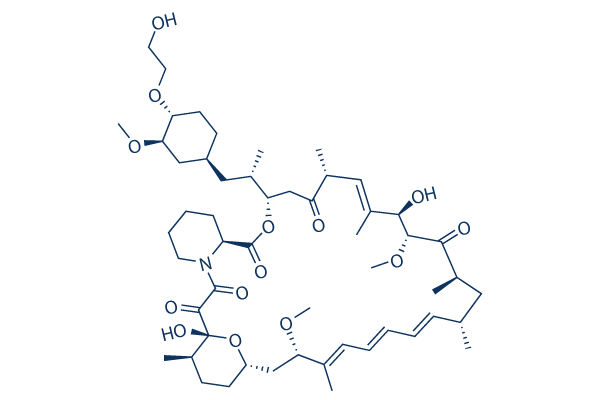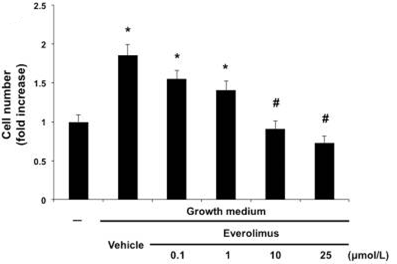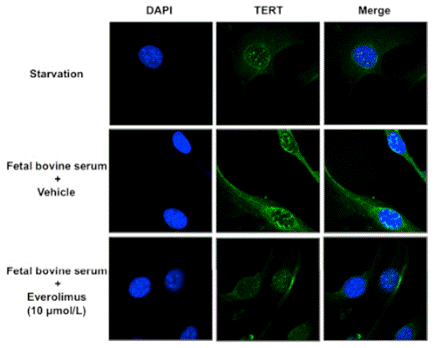
- Bioactive Compounds
- By Signaling Pathways
- PI3K/Akt/mTOR
- Epigenetics
- Methylation
- Immunology & Inflammation
- Protein Tyrosine Kinase
- Angiogenesis
- Apoptosis
- Autophagy
- ER stress & UPR
- JAK/STAT
- MAPK
- Cytoskeletal Signaling
- Cell Cycle
- TGF-beta/Smad
- Compound Libraries
- Popular Compound Libraries
- Customize Library
- Clinical and FDA-approved Related
- Bioactive Compound Libraries
- Inhibitor Related
- Natural Product Related
- Metabolism Related
- Cell Death Related
- By Signaling Pathway
- By Disease
- Anti-infection and Antiviral Related
- Neuronal and Immunology Related
- Fragment and Covalent Related
- FDA-approved Drug Library
- FDA-approved & Passed Phase I Drug Library
- Preclinical/Clinical Compound Library
- Bioactive Compound Library-I
- Bioactive Compound Library-Ⅱ
- Kinase Inhibitor Library
- Express-Pick Library
- Natural Product Library
- Human Endogenous Metabolite Compound Library
- Alkaloid Compound LibraryNew
- Angiogenesis Related compound Library
- Anti-Aging Compound Library
- Anti-alzheimer Disease Compound Library
- Antibiotics compound Library
- Anti-cancer Compound Library
- Anti-cancer Compound Library-Ⅱ
- Anti-cancer Metabolism Compound Library
- Anti-Cardiovascular Disease Compound Library
- Anti-diabetic Compound Library
- Anti-infection Compound Library
- Antioxidant Compound Library
- Anti-parasitic Compound Library
- Antiviral Compound Library
- Apoptosis Compound Library
- Autophagy Compound Library
- Calcium Channel Blocker LibraryNew
- Cambridge Cancer Compound Library
- Carbohydrate Metabolism Compound LibraryNew
- Cell Cycle compound library
- CNS-Penetrant Compound Library
- Covalent Inhibitor Library
- Cytokine Inhibitor LibraryNew
- Cytoskeletal Signaling Pathway Compound Library
- DNA Damage/DNA Repair compound Library
- Drug-like Compound Library
- Endoplasmic Reticulum Stress Compound Library
- Epigenetics Compound Library
- Exosome Secretion Related Compound LibraryNew
- FDA-approved Anticancer Drug LibraryNew
- Ferroptosis Compound Library
- Flavonoid Compound Library
- Fragment Library
- Glutamine Metabolism Compound Library
- Glycolysis Compound Library
- GPCR Compound Library
- Gut Microbial Metabolite Library
- HIF-1 Signaling Pathway Compound Library
- Highly Selective Inhibitor Library
- Histone modification compound library
- HTS Library for Drug Discovery
- Human Hormone Related Compound LibraryNew
- Human Transcription Factor Compound LibraryNew
- Immunology/Inflammation Compound Library
- Inhibitor Library
- Ion Channel Ligand Library
- JAK/STAT compound library
- Lipid Metabolism Compound LibraryNew
- Macrocyclic Compound Library
- MAPK Inhibitor Library
- Medicine Food Homology Compound Library
- Metabolism Compound Library
- Methylation Compound Library
- Mouse Metabolite Compound LibraryNew
- Natural Organic Compound Library
- Neuronal Signaling Compound Library
- NF-κB Signaling Compound Library
- Nucleoside Analogue Library
- Obesity Compound Library
- Oxidative Stress Compound LibraryNew
- Plant Extract Library
- Phenotypic Screening Library
- PI3K/Akt Inhibitor Library
- Protease Inhibitor Library
- Protein-protein Interaction Inhibitor Library
- Pyroptosis Compound Library
- Small Molecule Immuno-Oncology Compound Library
- Mitochondria-Targeted Compound LibraryNew
- Stem Cell Differentiation Compound LibraryNew
- Stem Cell Signaling Compound Library
- Natural Phenol Compound LibraryNew
- Natural Terpenoid Compound LibraryNew
- TGF-beta/Smad compound library
- Traditional Chinese Medicine Library
- Tyrosine Kinase Inhibitor Library
- Ubiquitination Compound Library
-
Cherry Picking
You can personalize your library with chemicals from within Selleck's inventory. Build the right library for your research endeavors by choosing from compounds in all of our available libraries.
Please contact us at [email protected] to customize your library.
You could select:
- Antibodies
- Bioreagents
- qPCR
- 2x SYBR Green qPCR Master Mix
- 2x SYBR Green qPCR Master Mix(Low ROX)
- 2x SYBR Green qPCR Master Mix(High ROX)
- Protein Assay
- Protein A/G Magnetic Beads for IP
- Anti-DYKDDDDK Tag magnetic beads
- Anti-DYKDDDDK Tag Affinity Gel
- Anti-Myc magnetic beads
- Anti-HA magnetic beads
- Poly DYKDDDDK Tag Peptide lyophilized powder
- Protease Inhibitor Cocktail
- Protease Inhibitor Cocktail (EDTA-Free, 100X in DMSO)
- Phosphatase Inhibitor Cocktail (2 Tubes, 100X)
- Cell Biology
- Cell Counting Kit-8 (CCK-8)
- Animal Experiment
- Mouse Direct PCR Kit (For Genotyping)
- New Products
- Contact Us
Everolimus
Synonyms: RAD001,SDZ-RAD
Everolimus is an mTOR inhibitor of FKBP12 with IC50 of 1.6-2.4 nM in a cell-free assay. Everolimus induces cell apoptosis and autophagy and inhibits tumor cells proliferation.

Everolimus Chemical Structure
CAS: 159351-69-6
Selleck's Everolimus has been cited by 755 publications
Purity & Quality Control
Batch:
Purity:
99.78%
99.78
Other mTOR Products
Related compound libraries
Choose Selective mTOR Inhibitors
Cell Data
| Cell Lines | Assay Type | Concentration | Incubation Time | Formulation | Activity Description | PMID |
|---|---|---|---|---|---|---|
| SQ20B | Cytotoxic Assay | 72 h | DMSO | IC50=5.5 μM | 24445311 | |
| Colo205 | Cytotoxic Assay | 72 h | DMSO | IC50=20 μM | 24445311 | |
| ColoR | Cytotoxic Assay | 72 h | DMSO | IC50=8.7 μM | 24445311 | |
| HCT116 | Cytotoxic Assay | 72 h | DMSO | IC50=12 μM | 24445311 | |
| HT29 | Cytotoxic Assay | 72 h | DMSO | IC50=15 μM | 24445311 | |
| CAKI1 | Cytotoxic Assay | 72 h | DMSO | IC50=14 μM | 24445311 | |
| SK-HEP1 | Cytotoxic Assay | 72 h | DMSO | IC50=12 μM | 24445311 | |
| DU145 | Cytotoxic Assay | 72 h | DMSO | IC50=8 μM | 24445311 | |
| OVCAR3 | Cytotoxic Assay | 72 h | DMSO | IC50=16 μM | 24445311 | |
| HOP62 | Cytotoxic Assay | 72 h | DMSO | IC50=19 μM | 24445311 | |
| Colo205 | Function Assay | 24 h | DMSO | Inhibits mTORC1 in human COLO205 cells assessed as reduction of S6 phosphorylation at 0.1 to 8 uM | 24836070 | |
| Colo205 | Function Assay | 24 h | DMSO | Inhibits mTORC1 in human COLO205 cells assessed as reduction of 4-EBP1 phosphorylation at 0.1 to 8 uM | 24836070 | |
| SK-HEP1 | Function Assay | 24 h | DMSO | Inhibits mTORC1 in human SK-HEP1 cells assessed as reduction of S6 phosphorylation at 0.1 to 8 uM | 24836070 | |
| SK-HEP1 | Function Assay | 24 h | DMSO | Inhibits mTORC1 in human SK-HEP1 cells assessed as reduction of 4-EBP1 phosphorylation at 0.1 to 8 uM | 24836070 | |
| Sf9 | Function Assay | 15 to 20 mins | Inhibition of human BSEP overexpressed in Sf9 cell membrane vesicles assessed as uptake of [3H]-taurocholate in presence of ATP measured after 15 to 20 mins by membrane vesicle transport assay, IC50 = 2 μM. | 23956101 | ||
| Sf9 | Function Assay | 20 mins | Inhibition of human MRP2 overexpressed in Sf9 cell membrane vesicles assessed as uptake of [3H]-estradiol-17beta-D-glucuronide in presence of ATP and GSH measured after 20 mins by membrane vesicle transport assay, IC50 = 11.3 μM. | 23956101 | ||
| A549 | Autophagy assay | 5 uM | 6 h | Induction of autophagy in human A549 cells assessed as increase in conversion of LC3-1 to LC3-2 at 5 uM after 6 hrs by Western blot analysis | 26176165 | |
| A549 | Function Assay | 5 uM | 3 to 24 h | Inhibition of mTOR phosphorylation at ser2448 in human A549 cells at 5 uM after 3 to 24 hrs by Western blot analysis | 26176165 | |
| A549 | Function Assay | 5 uM | 3 to 24 h | Inhibition of mTOR in human A549 cells assessed as downregulation of p70S6K phosphorylation at thr389 at 5 uM after 3 to 24 hrs by Western blot analysis | 26176165 | |
| Click to View More Cell Line Experimental Data | ||||||
Biological Activity
| Description | Everolimus is an mTOR inhibitor of FKBP12 with IC50 of 1.6-2.4 nM in a cell-free assay. Everolimus induces cell apoptosis and autophagy and inhibits tumor cells proliferation. | ||||
|---|---|---|---|---|---|
| Targets |
|
| In vitro | ||||
| In vitro | Everolimus exhibits the immunosuppressive activity which is comparable to that of rapamycin. Everolimus competes with immobilized FK 506 for binding to biotinylated FKBP12 and shows the inhibitory effect on a two-way MLR performed with spleen cells from BALB/c and CBA mice with IC50 of 0.12-1.8 nM. [1] Everolimus also shows antiangiogenic/vascular effects in VEGF-induced HUVEC proliferation with IC50 of 0.12 nM and bFGF-induced HUVEC proliferation with IC50 of 0.8 nM, respectively. [2] A recent study shows that Everolimus shows a dose-dependent inhibitory effects on both the total cells and the stem cells from the BT474 cell line and the primary breast cancer cells with IC50 of 156 nM in total cells of primary breast cancer cells and 71 nM in total cells of BT474 cells. In addition, combination treatment with Everolimus and trastuzumab produces the significantly increased inhibition on the growth of cancer stem cells with the inhibition rate increased by more than 50 %. [3] | |||
|---|---|---|---|---|
| Kinase Assay | FKBP12 binding assay & Mixed lymphocyte reaction (MLR) | |||
| FKBP12 binding assay: Binding to the FK 506 binding protein (FKBP12) is indirectly assessed by means of an ELISA-type competition assay. FK 506 is included in each individual experiment as a standard, and the inhibitory activity is expressed as relative IC50 compared to FK 506 (rIC50 = IC50 Everolimus/IC50 FK 506). Mixed lymphocyte reaction (MLR): The immunosuppressive activities of RAP and its derivatives are assessed in a two-way MLR, using spleen cells of BALB/c and CBA mice. RAP is included in each individual experiment as a standard, and the inhibitory activity is expressed as relative IC50 compared to RAP (rIC50 = IC50 Everolimus/IC50 RAP). | ||||
| Cell Research | Cell lines | BT474 cell line and the primary breast cancer cells | ||
| Concentrations | 0.001-10 μM | |||
| Incubation Time | 24 hours | |||
| Method | The 3-(4-5-dimethylthiazol-2-yl)-2,5-diphenyltetrazolium bromide dye reduction assay (MTT assay) is used to compare the effects of Everolimus or trastuzumab on total breast cancer cells and breast CSCs. The total cells and the stem cells from the BT474 cell line and the primary breast cancer cells are respectively seeded into 96-well plates with different concentrations of the drugs, with five wells for each concentration, and the cells are cultured at 37 °C with 5 % CO2 in an incubator for 24 hours. The concentrations of Everolimus are 1 nM, 10 nM, 100 nM, 1 μM and 10 μM, and the concentrations of trastuzumab are 0.5 μg/mL, 1 μg/mL, 10 μg/mL, 50 μg/mL, and 100 μg/mL. The combinatorial inhibitory effect of Everolimus and Trastuzumab on the in vitro growth of breast CSCs is examined by MTT assay as well using 10 μg/mL trastuzumab in combination of increasing concentrations of everolimus (1 nM, 10 nM, 100 nM and 1 μM). After drug treatment for 24 hours, 20 μL MTT [5 mg/mL in phosphate buffered saline (PBS)] is added to each well, and the cells are incubated at 37 °C with 5 % CO2 and saturated humidity for 4 hours. Following the subsequent removal of the supernatant, 150 μL dimethyl sulfoxide (DMSO) is added to each well, and the cells are vortexed for 10 minutes. The light absorbance (OD value) is measured for each well using an ELISA reader. Each experiment is repeated in triplicate, and dose–response curves are plotted. The probit software of the statistical software package SPSS 17.0 for Windows is used to calculate the inhibitory concentration (IC50) of Everolimus. | |||
| Experimental Result Images | Methods | Biomarkers | Images | PMID |
| Western blot | Mcl-1 / p-ERK / S6K1(T389) pS6RP cleaved caspase-3 |

|
27351224 | |
| Growth inhibition assay | Cell counts IC50 Cell proliferation |

|
27127803 | |
| Immunofluorescence | TERT |

|
27127803 | |
| In Vivo | ||
| In vivo | Everolimus (0.1 to 10 mg/kg) dose-dependently inhibits growth of the primary (ear) and lymph node metastases of B16/BL6 melanoma, with decreased total number of vessels and reduced mature vessels. [2] In a xenograft animal model of BT474 stem cells, Everolimus shows significant reductions in mean tumor sizes (590.6 mm3), compared to the control group with a tumor size of 698 mm3. Furthermore, combination treatment with Everolimus and trastuzumab significantly decreases the xenograft tumor size (410.8 mm3) more than Everolimus treatment alone. [3] | |
|---|---|---|
| Animal Research | Animal Models | Cultured BT474 stem cells are injected beneath the left breast pad of BALB/c nude mice. |
| Dosages | ≤2 mg/kg | |
| Administration | Administered via p.o. | |
| NCT Number | Recruitment | Conditions | Sponsor/Collaborators | Start Date | Phases |
|---|---|---|---|---|---|
| NCT05843253 | Not yet recruiting | High Grade Glioma|Diffuse Intrinsic Pontine Glioma|Anaplastic Astrocytoma|Glioblastoma|Glioblastoma Multiforme|Diffuse Midline Glioma H3 K27M-Mutant|Metastatic Brain Tumor|WHO Grade III Glioma|WHO Grade IV Glioma | Nationwide Children''s Hospital|Novartis | January 15 2024 | Phase 2 |
| NCT05501769 | Recruiting | Breast Cancer | Arvinas Estrogen Receptor Inc.|Pfizer|Arvinas Inc. | September 8 2022 | Phase 1 |
| NCT05476939 | Recruiting | Diffuse Intrinsic Pontine Glioma|Diffuse Midline Glioma H3 K27M-Mutant | Gustave Roussy Cancer Campus Grand Paris|Chimerix|Innovative Therapies For Children with Cancer Consortium | September 29 2022 | Phase 3 |
| NCT05293964 | Recruiting | Breast Cancer | Jiangsu Simcere Pharmaceutical Co. Ltd. | May 18 2022 | Phase 1 |
Chemical lnformation & Solubility
| Molecular Weight | 958.22 | Formula | C53H83NO14 |
| CAS No. | 159351-69-6 | SDF | Download Everolimus SDF |
| Smiles | CC1CCC2CC(C(=CC=CC=CC(CC(C(=O)C(C(C(=CC(C(=O)CC(OC(=O)C3CCCCN3C(=O)C(=O)C1(O2)O)C(C)CC4CCC(C(C4)OC)OCCO)C)C)O)OC)C)C)C)OC | ||
| Storage (From the date of receipt) | |||
|
In vitro |
DMSO : 100 mg/mL ( (104.36 mM); Moisture-absorbing DMSO reduces solubility. Please use fresh DMSO.) Ethanol : 100 mg/mL Water : Insoluble |
Molecular Weight Calculator |
|
In vivo Add solvents to the product individually and in order. |
In vivo Formulation Calculator |
||||
Preparing Stock Solutions
Molarity Calculator
In vivo Formulation Calculator (Clear solution)
Step 1: Enter information below (Recommended: An additional animal making an allowance for loss during the experiment)
mg/kg
g
μL
Step 2: Enter the in vivo formulation (This is only the calculator, not formulation. Please contact us first if there is no in vivo formulation at the solubility Section.)
% DMSO
%
% Tween 80
% ddH2O
%DMSO
%
Calculation results:
Working concentration: mg/ml;
Method for preparing DMSO master liquid: mg drug pre-dissolved in μL DMSO ( Master liquid concentration mg/mL, Please contact us first if the concentration exceeds the DMSO solubility of the batch of drug. )
Method for preparing in vivo formulation: Take μL DMSO master liquid, next addμL PEG300, mix and clarify, next addμL Tween 80, mix and clarify, next add μL ddH2O, mix and clarify.
Method for preparing in vivo formulation: Take μL DMSO master liquid, next add μL Corn oil, mix and clarify.
Note: 1. Please make sure the liquid is clear before adding the next solvent.
2. Be sure to add the solvent(s) in order. You must ensure that the solution obtained, in the previous addition, is a clear solution before proceeding to add the next solvent. Physical methods such
as vortex, ultrasound or hot water bath can be used to aid dissolving.
Tech Support
Answers to questions you may have can be found in the inhibitor handling instructions. Topics include how to prepare stock solutions, how to store inhibitors, and issues that need special attention for cell-based assays and animal experiments.
Tel: +1-832-582-8158 Ext:3
If you have any other enquiries, please leave a message.
* Indicates a Required Field
Frequently Asked Questions
Question 1:
For the in vivo work, I know the drug needs to be dissolved in 30% propylene glycol (dilution in water) and 5%Tween 80. Would the final solution be a clear liquid or a turbid suspension?
Answer:
Our S1120 Everolimus (RAD001) in 30% Propylene glycol+5% Tween 80+ddH2O at 5mg/ml is a clear solution. And for oral gavage, there is another common vehicle, 1% CMC Na. Everolimus can be dissolved in it at 30mg/ml as a suspension.
Tags: buy Everolimus | Everolimus supplier | purchase Everolimus | Everolimus cost | Everolimus manufacturer | order Everolimus | Everolimus distributor








































